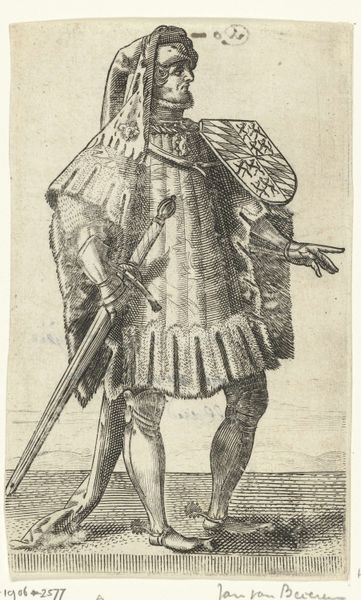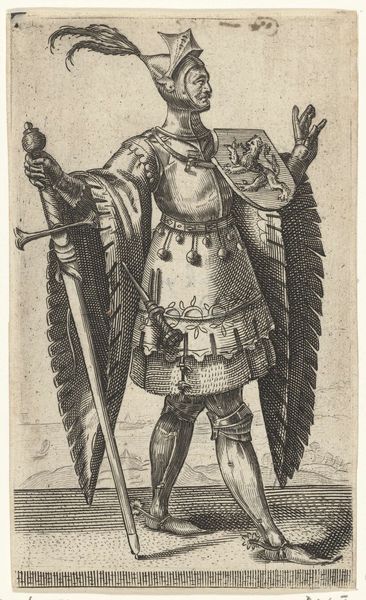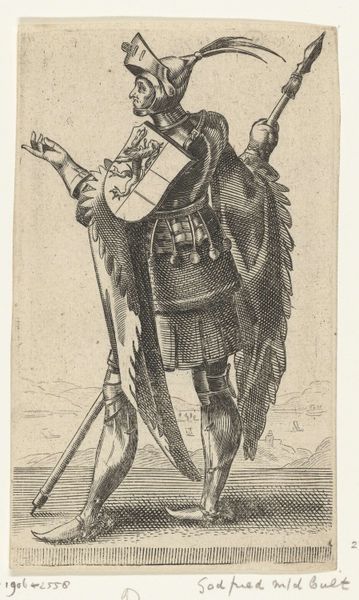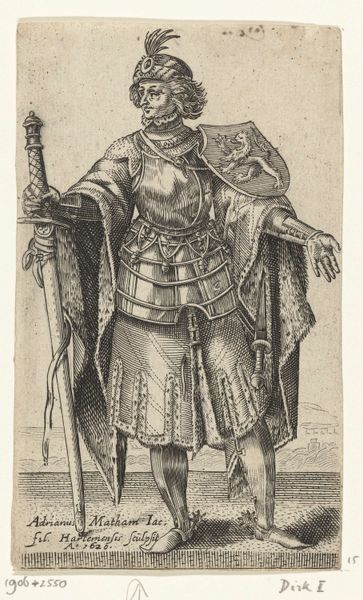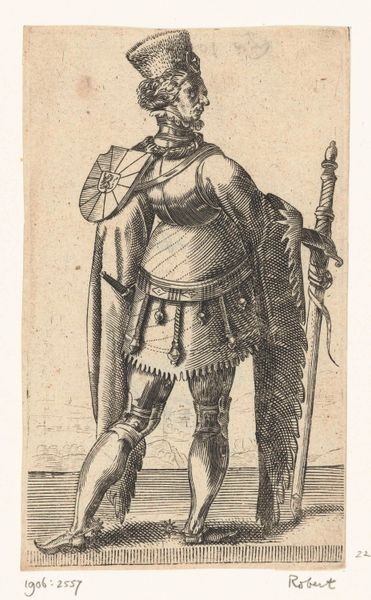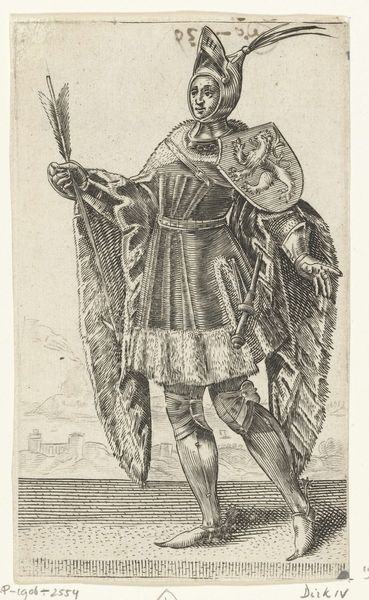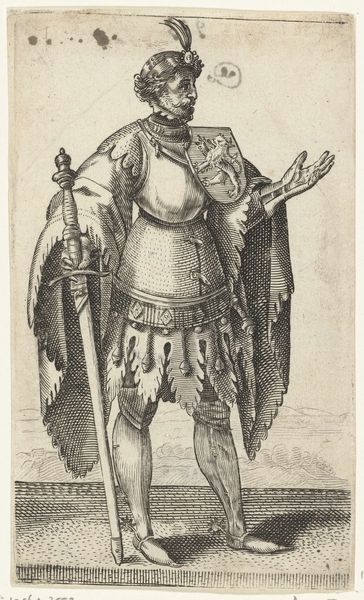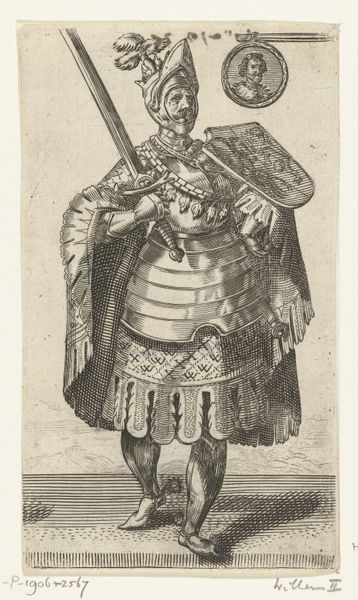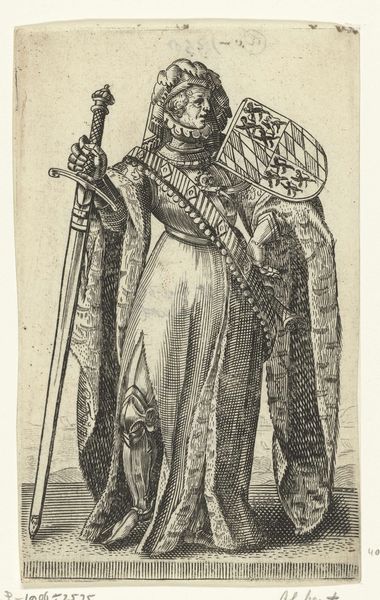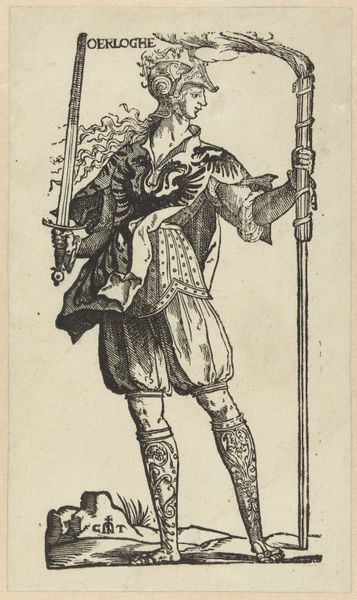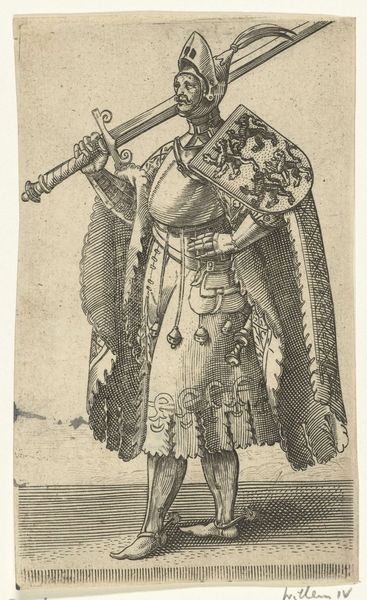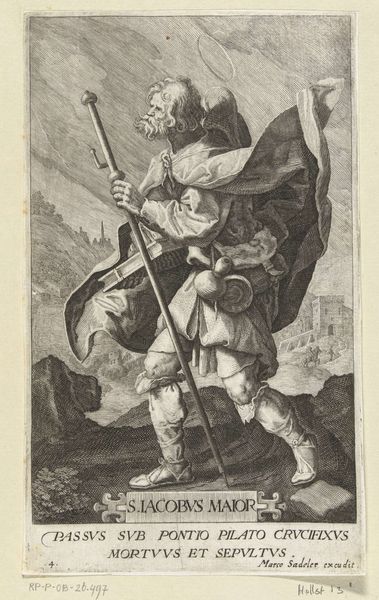
print, engraving
#
portrait
#
baroque
#
dutch-golden-age
# print
#
pen sketch
#
pencil sketch
#
old engraving style
#
figuration
#
pen-ink sketch
#
line
#
sketchbook drawing
#
history-painting
#
engraving
Dimensions: height 130 mm, width 80 mm
Copyright: Rijks Museum: Open Domain
Curator: This engraving, dating back to 1620, is a portrait of Floris II, Count of Holland. It's attributed to Adriaen Matham and held here at the Rijksmuseum. Editor: The figure strikes me immediately. There's something very deliberate and formal about his posture, and the intricate detail in the clothing jumps out—almost overwhelming the figure itself. The rendering suggests someone quite removed from common labor. Curator: Absolutely. The sheer level of detail achieved through the engraving process speaks volumes about the skill and time involved in its production. Look at the rendering of the fur cloak and the meticulously etched patterns on his tunic. Consider, too, the societal structures that afforded Matham the patronage to create this and guaranteed its subject’s lasting fame. It tells us much about value, labour, and the circulation of images in 17th-century Holland. Editor: Indeed, this portrait reflects more than just a likeness. Its a socio-political statement about power, status, and the projection of an image. The shield with the rampant lion reinforces lineage and authority, whilst the sword demonstrates dominance. The print allows wider circulation, consolidating Floris IIs representation within a growing Dutch identity. I am also thinking about where this might have been displayed: in books, individual framed pieces or part of larger family tree displays? Curator: Interesting question: such questions of circulation reflect changing forms of consumption. These types of prints acted almost as early forms of reproduced propaganda; it brings up larger questions concerning what drove the market and what forms of patronage and ownership controlled it. The materials themselves—the paper, the ink, the plates—trace an entire network of producers and vendors all involved in making and selling symbolic capital. Editor: It's interesting to consider the original historical context versus our contemporary perspective on a piece like this. Today, we view it as a work of art but, then, it likely functioned more as a dynastic or political object. Curator: Precisely! The dialogue between craft, intention, and impact exposes shifts in societal perceptions of this engraving and offers insight into what Floris II meant and what it means to encounter him today.
Comments
No comments
Be the first to comment and join the conversation on the ultimate creative platform.

